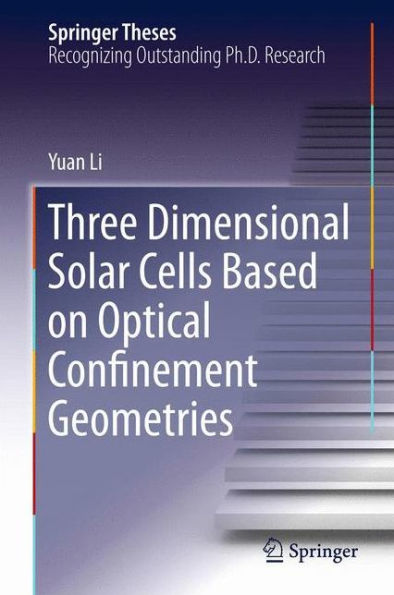Three Dimensional Solar Cells Based on Optical Confinement Geometries
Three dimensional (3D) optical geometries are becoming more common in the literature and lexicon of solar cells. Three Dimensional Solar Cells Based on Optical Confinement Geometries describes and reveals the basic operational nuances of 3D photovoltaics using three standard tools: Equivalent Circuit Models, Ray Tracing Optics in the Cavity, and Absorber Spectral Response. These tools aide in understanding experimental absorption profile and device parameters including Jsc, Voc, Fill Factor, and EQE. These methods also apply to individual optical confinement geometry device, integrated optical confinement geometry device, and hybrid optical confinement geometry device.
Additionally, this book discusses the importance of these methods in achieving the goal of high efficiency solar cells and suggests a possible application in large-scale photovoltaics business, like solar farms.
1136505268
Additionally, this book discusses the importance of these methods in achieving the goal of high efficiency solar cells and suggests a possible application in large-scale photovoltaics business, like solar farms.
Three Dimensional Solar Cells Based on Optical Confinement Geometries
Three dimensional (3D) optical geometries are becoming more common in the literature and lexicon of solar cells. Three Dimensional Solar Cells Based on Optical Confinement Geometries describes and reveals the basic operational nuances of 3D photovoltaics using three standard tools: Equivalent Circuit Models, Ray Tracing Optics in the Cavity, and Absorber Spectral Response. These tools aide in understanding experimental absorption profile and device parameters including Jsc, Voc, Fill Factor, and EQE. These methods also apply to individual optical confinement geometry device, integrated optical confinement geometry device, and hybrid optical confinement geometry device.
Additionally, this book discusses the importance of these methods in achieving the goal of high efficiency solar cells and suggests a possible application in large-scale photovoltaics business, like solar farms.
Additionally, this book discusses the importance of these methods in achieving the goal of high efficiency solar cells and suggests a possible application in large-scale photovoltaics business, like solar farms.
109.99
In Stock
5
1

Three Dimensional Solar Cells Based on Optical Confinement Geometries
154
Three Dimensional Solar Cells Based on Optical Confinement Geometries
154Paperback(2013)
$109.99
109.99
In Stock

Product Details
| ISBN-13: | 9781489997906 |
|---|---|
| Publisher: | Springer New York |
| Publication date: | 12/13/2014 |
| Series: | Springer Theses |
| Edition description: | 2013 |
| Pages: | 154 |
| Product dimensions: | 6.10(w) x 9.25(h) x 0.02(d) |
About the Author
From the B&N Reads Blog
